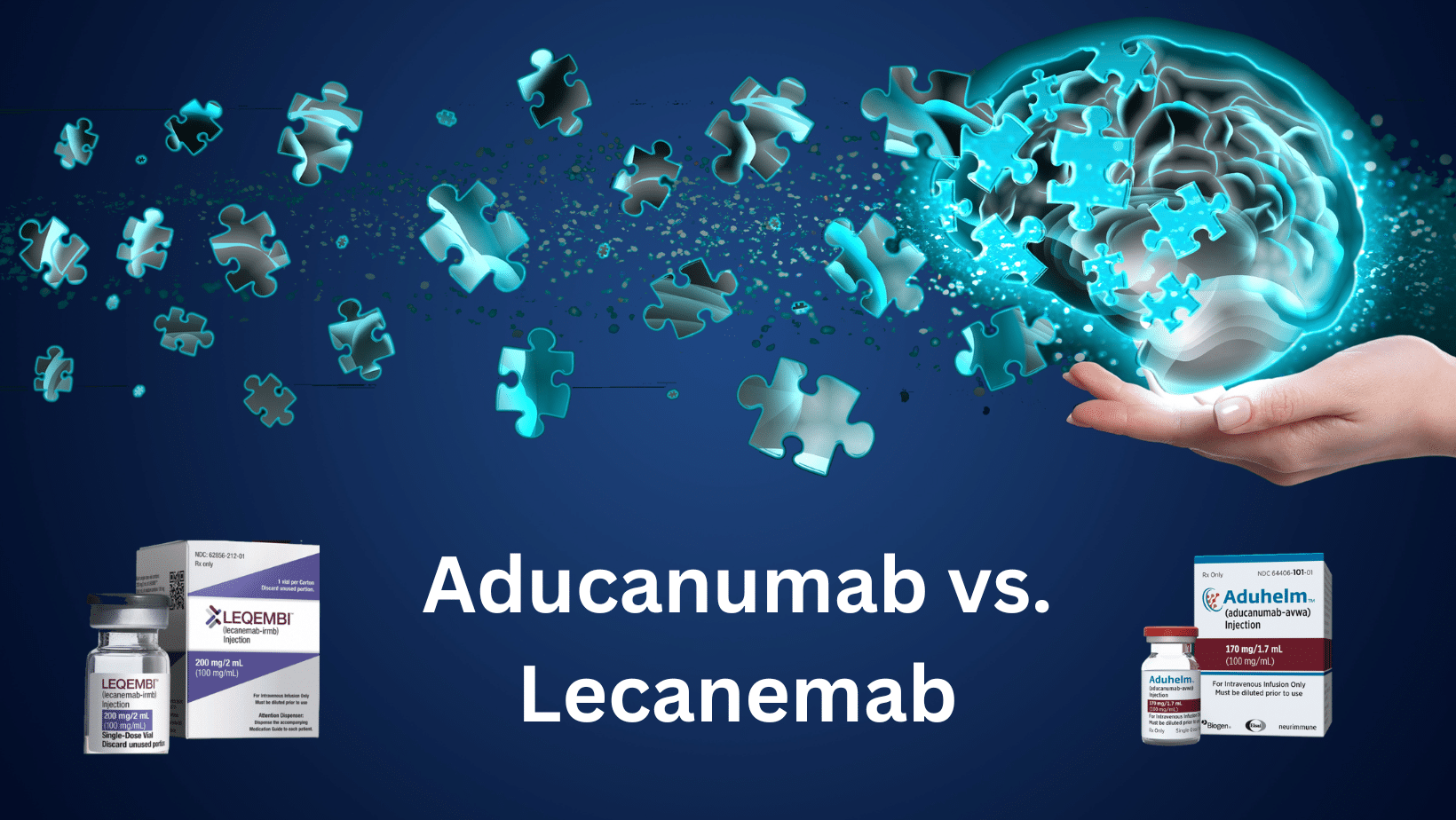
Aducanumab and Lecanemab: How are they different?
March 4, 2024 | Alzheimer's & Dementia
Reprinted with permission from Seniors Blue Book.
Aducanumab and Lecanemab are both medications for the treatment of Alzheimer’s disease. Aducanumab is a monoclonal antibody that targets beta-amyloid, a protein that accumulates in the brain and is associated with the development of Alzheimer’s. Lecanemab is also a monoclonal antibody but it targets a different structure of beta-amyloid, called N3pG, which is believed to play a key role in the formation of amyloid plaques in the brain.
The main difference between Aducanumab and Lecanemab is their mechanism of action. Aducanumab works by removing beta-amyloid from the brain, while Lecanemab works by blocking the formation of amyloid plaques in the brain.
In clinical trials, Lecanemab has been shown to remove amyloid more quickly than Aducanumab or another medication called gantenerumab. Lecanemab has also shown a lower incidence of a side effect called ARIA (amyloid-related imaging abnormalities) compared to Aducanumab in clinical trials.
It is important to note that both medications are still under investigation and more research is needed to fully understand their benefits and limitations. The choice of medication will ultimately depend on a patient’s specific needs and circumstances, and should be made in consultation with a healthcare provider.
Additionally, Aducanumab is approved for use in some countries, including the U.S., but is still awaiting approval in others. Lecanemab as of January 6th, 2023, has been approved by the U.S. Food and Drug Administration (FDA) through the Accelerated Approval pathway.
Both Aducanumab and Lecanemab are part of a growing body of research into new treatments for Alzheimer’s disease, which remains one of the most challenging and devastating neurological conditions. There are currently limited treatment options for Alzheimer’s, and the development of new and effective therapies is a major priority for researchers and clinicians.
While both medications show promise in their ability to target beta-amyloid, it is important to remember that treating Alzheimer’s is a complex process that involves addressing multiple factors, including genetics, lifestyle, and environment.
In conclusion, the differences between Aducanumab and Lecanemab lie in their mechanism of action and stage of development. Further research is needed to determine the long-term safety and efficacy of these medications in the treatment of Alzheimer’s disease. As with any medical treatment, it is important to consult with a healthcare provider to determine the best course of action for an individual patient.
Go Back